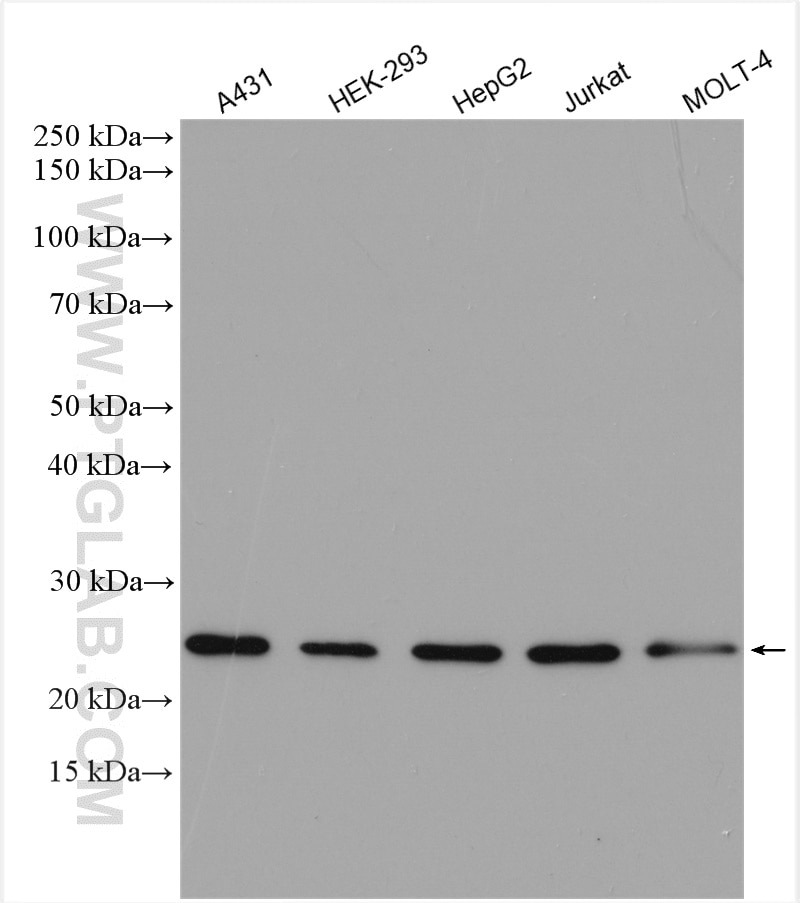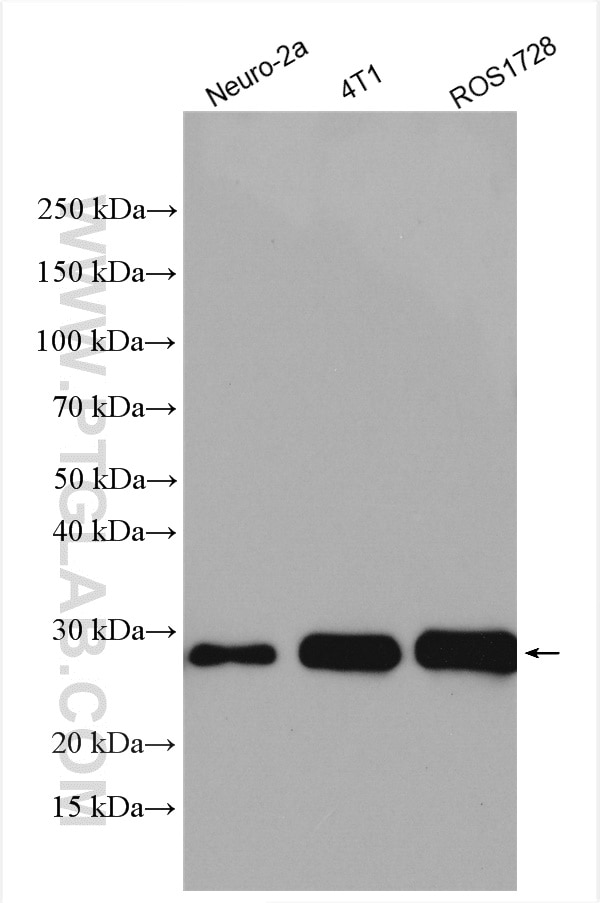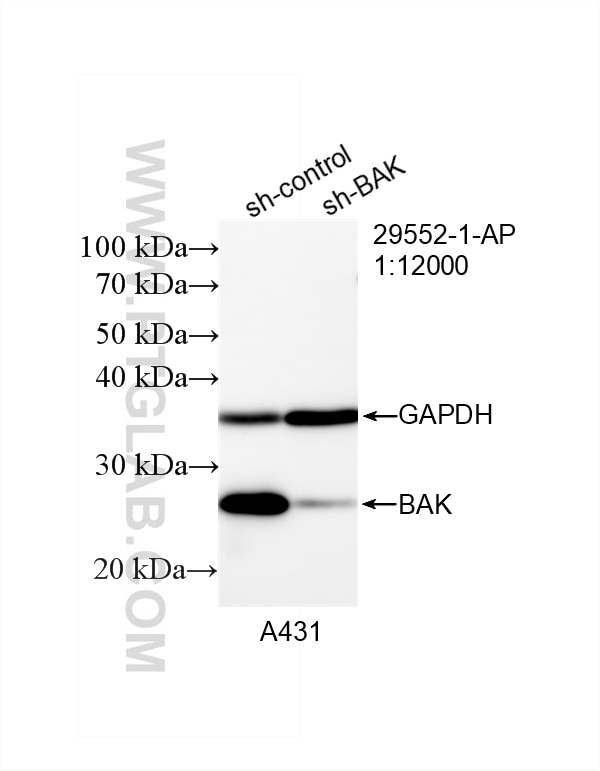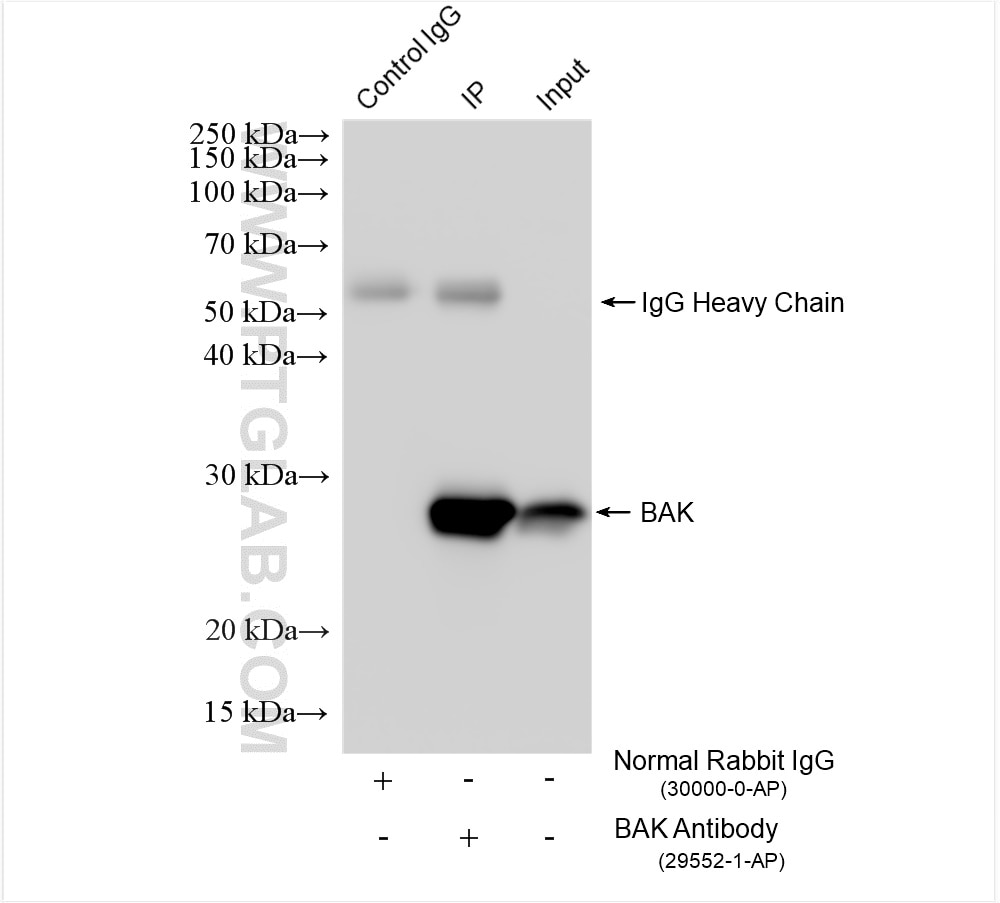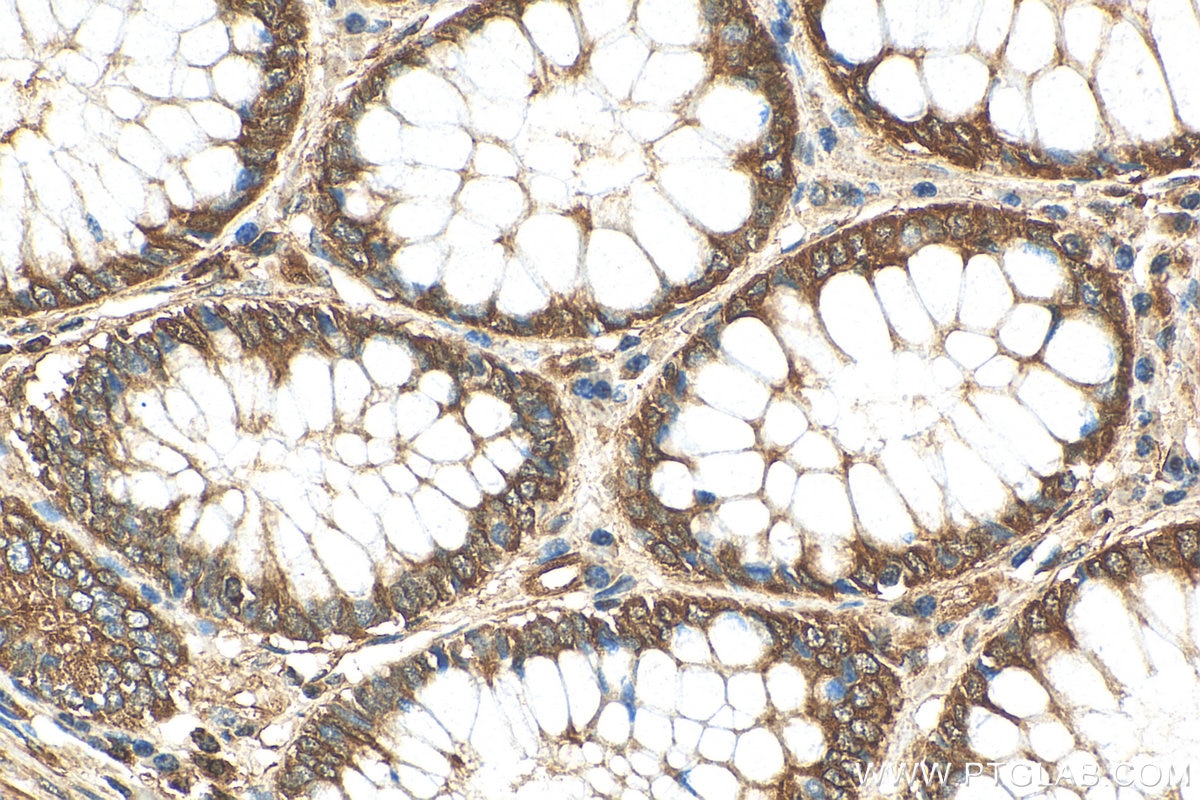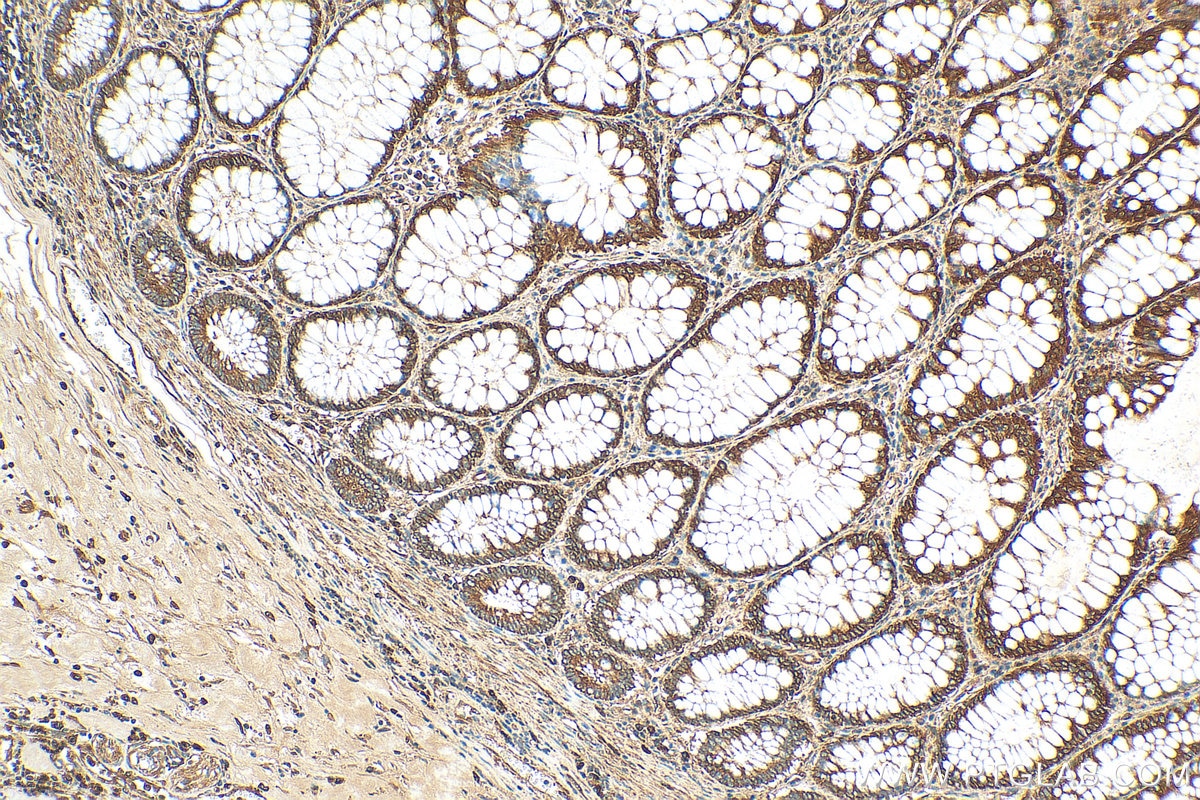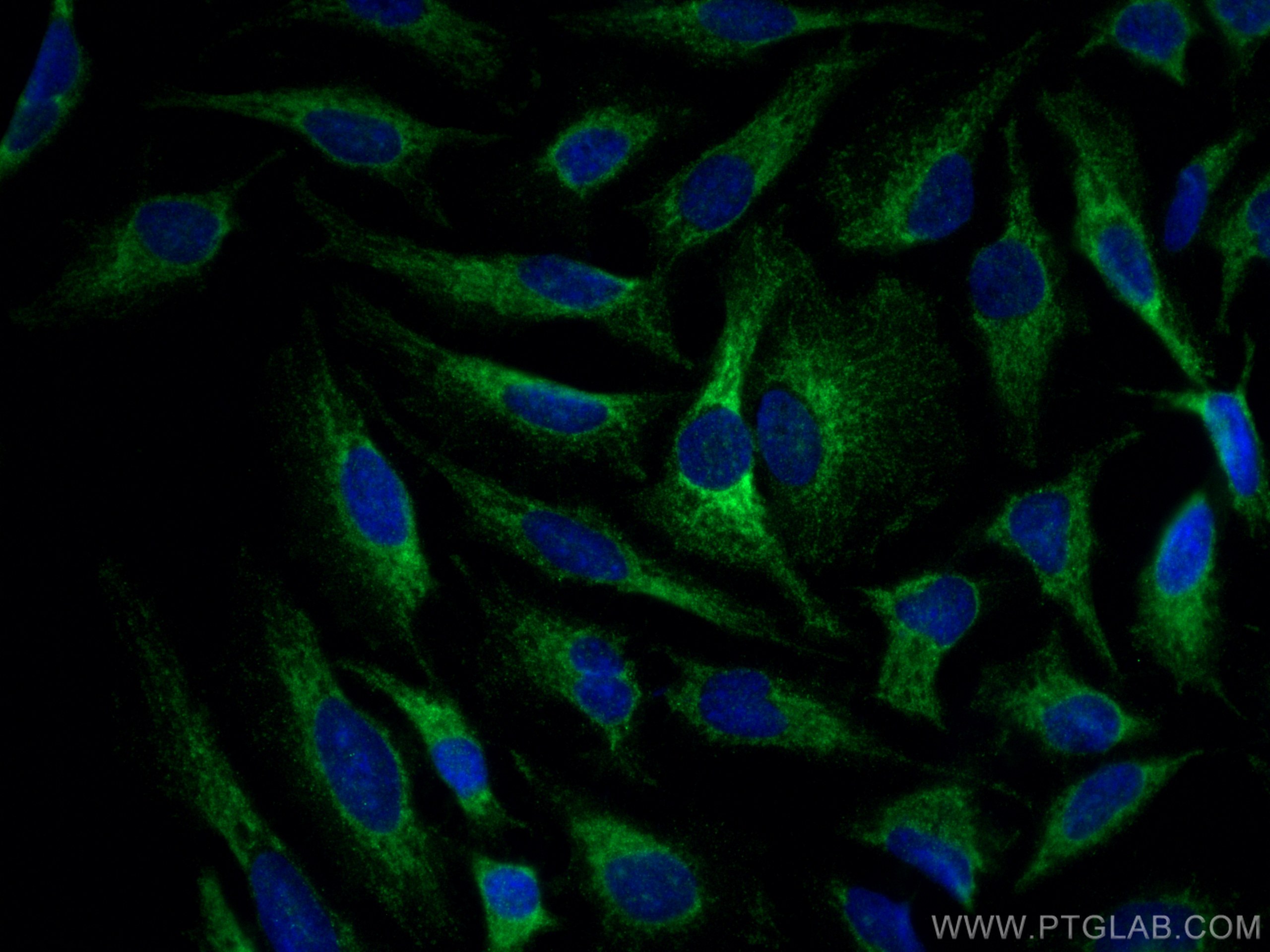- Phare
- Validé par KD/KO
Anticorps Polyclonal de lapin anti-BAK
BAK Polyclonal Antibody for WB, IHC, IF/ICC, IP, ELISA
Hôte / Isotype
Lapin / IgG
Réactivité testée
Humain, rat, souris et plus (1)
Applications
WB, IHC, IF/ICC, IP, ELISA
Conjugaison
Non conjugué
N° de cat : 29552-1-AP
Synonymes
Galerie de données de validation
Applications testées
| Résultats positifs en WB | cellules A431, cellules 4T1, cellules HEK-293, cellules HepG2, cellules Jurkat, cellules MOLT-4, cellules Neuro-2a, cellules ROS1728 |
| Résultats positifs en IP | cellules A431, |
| Résultats positifs en IHC | tissu de cancer du côlon humain, il est suggéré de démasquer l'antigène avec un tampon de TE buffer pH 9.0; (*) À défaut, 'le démasquage de l'antigène peut être 'effectué avec un tampon citrate pH 6,0. |
| Résultats positifs en IF/ICC | cellules HeLa, |
Dilution recommandée
| Application | Dilution |
|---|---|
| Western Blot (WB) | WB : 1:2000-1:12000 |
| Immunoprécipitation (IP) | IP : 0.5-4.0 ug for 1.0-3.0 mg of total protein lysate |
| Immunohistochimie (IHC) | IHC : 1:50-1:500 |
| Immunofluorescence (IF)/ICC | IF/ICC : 1:50-1:500 |
| It is recommended that this reagent should be titrated in each testing system to obtain optimal results. | |
| Sample-dependent, check data in validation data gallery | |
Applications publiées
| WB | See 22 publications below |
| IHC | See 4 publications below |
Informations sur le produit
29552-1-AP cible BAK dans les applications de WB, IHC, IF/ICC, IP, ELISA et montre une réactivité avec des échantillons Humain, rat, souris
| Réactivité | Humain, rat, souris |
| Réactivité citée | rat, Humain, poulet, souris |
| Hôte / Isotype | Lapin / IgG |
| Clonalité | Polyclonal |
| Type | Anticorps |
| Immunogène | BAK Protéine recombinante Ag31042 |
| Nom complet | BCL2-antagonist/killer 1 |
| Masse moléculaire calculée | 23 kDa |
| Poids moléculaire observé | 23-25 kDa |
| Numéro d’acquisition GenBank | NM_001188 |
| Symbole du gène | BAK1 |
| Identification du gène (NCBI) | 578 |
| Conjugaison | Non conjugué |
| Forme | Liquide |
| Méthode de purification | Purification par affinité contre l'antigène |
| Tampon de stockage | PBS with 0.02% sodium azide and 50% glycerol |
| Conditions de stockage | Stocker à -20°C. Stable pendant un an après l'expédition. L'aliquotage n'est pas nécessaire pour le stockage à -20oC Les 20ul contiennent 0,1% de BSA. |
Informations générales
The protein encoded by this gene belongs to the BCL2 protein family. BCL2 family members form oligomers or heterodimers and act as anti- or pro-apoptotic regulators that are involved in a wide variety of cellular activities. This protein localizes to mitochondria, and functions to induce apoptosis. It interacts with and accelerates the opening of the mitochondrial voltage-dependent anion channel, which leads to a loss in membrane potential and the release of cytochrome c. This protein also interacts with the tumor suppressor P53 after exposure to cell stress.
Protocole
| Product Specific Protocols | |
|---|---|
| WB protocol for BAK antibody 29552-1-AP | Download protocol |
| IHC protocol for BAK antibody 29552-1-AP | Download protocol |
| IF protocol for BAK antibody 29552-1-AP | Download protocol |
| IP protocol for BAK antibody 29552-1-AP | Download protocol |
| Standard Protocols | |
|---|---|
| Click here to view our Standard Protocols |
Publications
| Species | Application | Title |
|---|---|---|
Apoptosis Investigation of GPR143 as a promising novel marker for the progression of skin cutaneous melanoma through bioinformatic analyses and cell experiments | ||
Life Sci A novel antimycin analogue antimycin A2c, derived from marine Streptomyces sp., suppresses HeLa cells via disrupting mitochondrial function and depleting HPV oncoproteins E6/E7 | ||
Mar Drugs Astaxanthin Inhibits H2O2-Induced Excessive Mitophagy and Apoptosis in SH-SY5Y Cells by Regulation of Akt/mTOR Activation | ||
Cell Metab Muscle-derived small extracellular vesicles induce liver fibrosis during overtraining | ||
Cell Biochem Biophys MiR-218 Exhibits Anti-Leukemia Effects by Targeting CTNND2 in Primary Acute Erythroid Leukemia HEL Cells |
